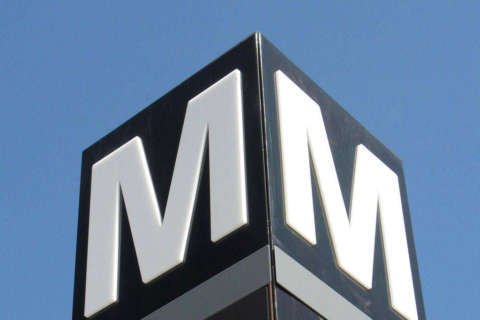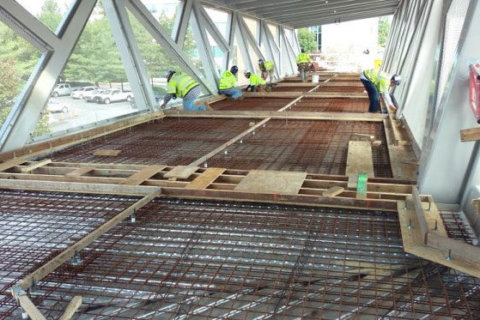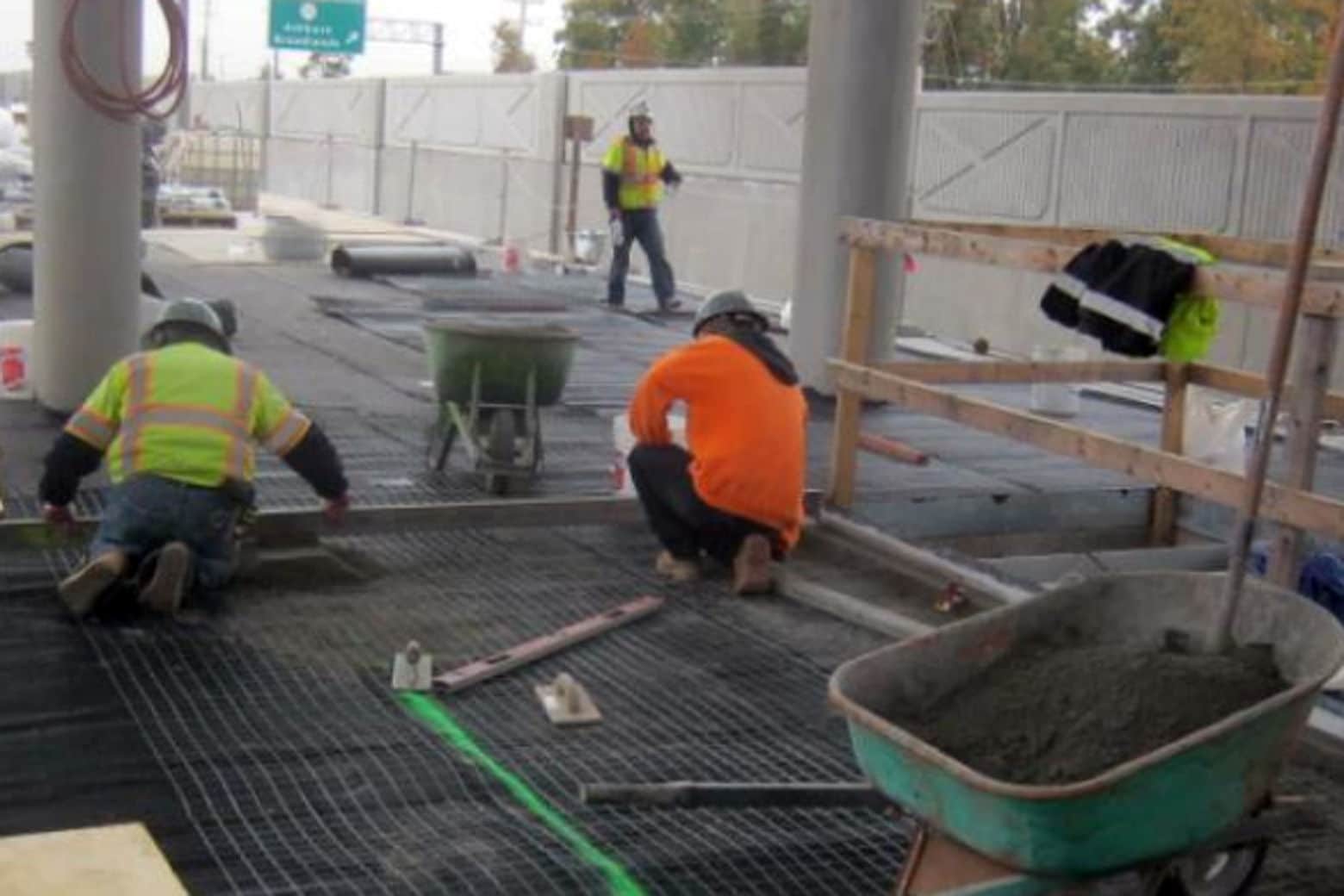
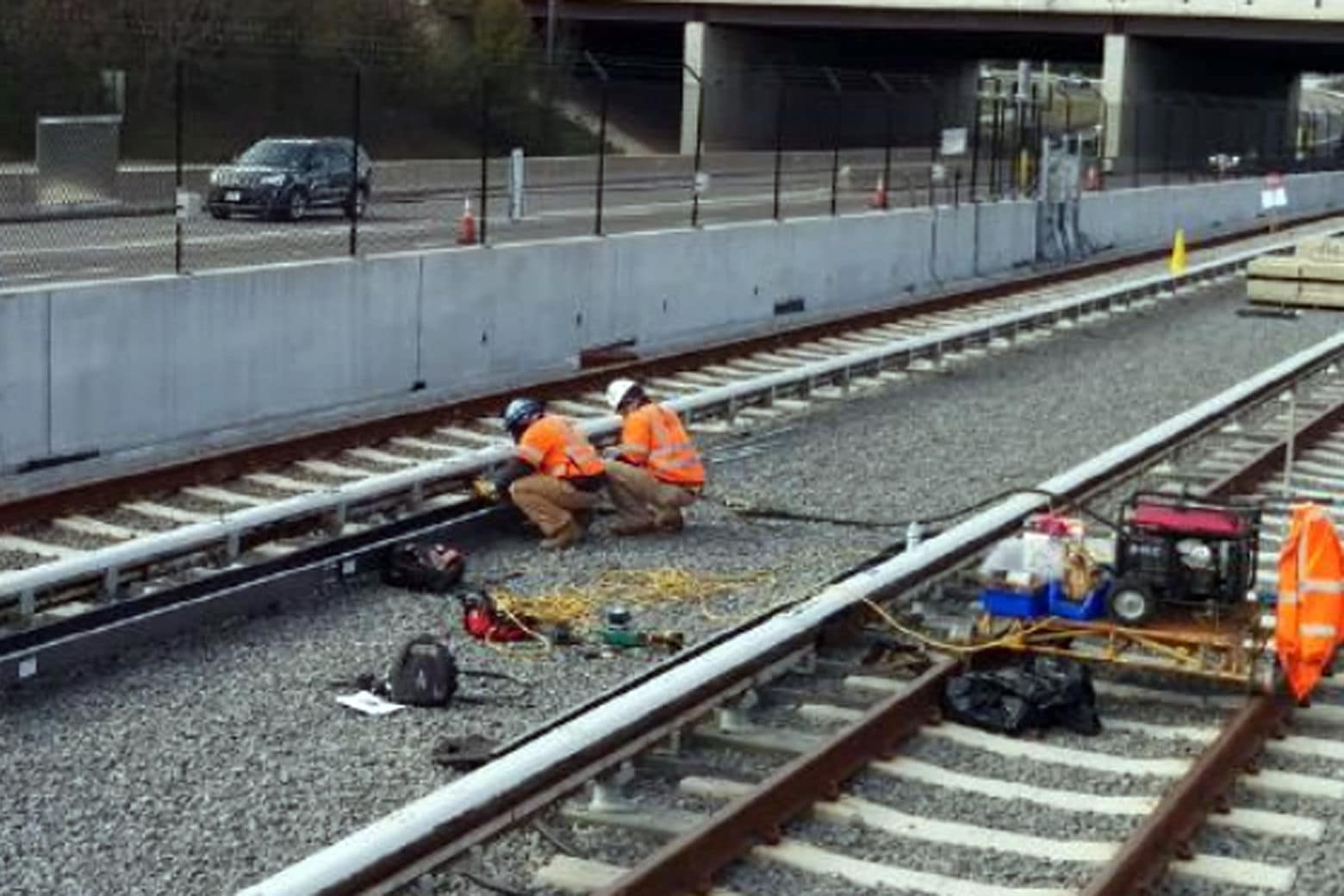


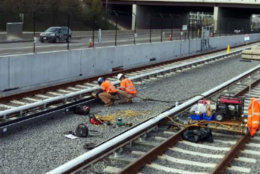
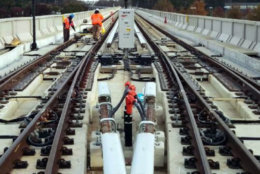
ARLINGTON, Va. — Metro trains are about to start running on the new Silver Line tracks, but it will be a year or more before passengers can board them.
In a significant milestone, Metro ran a track inspection vehicle Tuesday from the current end of the Silver Line through to the area around Dulles Airport, the contractor building the second phase of the line said. The line will stretch beyond Dulles Airport to Loudoun Gateway and Ashburn stations.
Next, a test train will be on the tracks near Dulles Airport shortly after New Year’s Day, according to Keith Couch of Capital Rail Constructors told the Metropolitan Washington Airports Authority Board.
“We’re very anxious to get that started,” Couch said.
A train testing readiness report was submitted to the airports authority and Metro last month, Couch said, and Capital Rail Constructors is now responding to feedback to submit a final report shortly.
At one point before the schedule slipped again, the contractor had hoped to start running test trains this fall. The project is now just barely on its delayed schedule.
“We’re giving it everything we’ve got,” Couch said, but could not promise the project would not be delayed again.
“That’s sort of comforting,” MWAA Board Member Kate Hanley said, “but I’m still going to have to worry.”
Work on most of the stations is now due to be completed by the end of summer 2019, and a separate contractor is working to finish the new rail yard near the end of the line.
The final pedestrian bridge connecting future riders to a station is due to be set at the Herndon-Monroe parking garage just before Christmas.
The Silver Line is currently expected to open to riders sometime in 2020, depending on when it is complete enough to turn over to Metro for additional testing and training. Metro’s budget plans suggest the agency expects the line to open around early summer 2020, although that could change.
The airports authority is overseeing construction and will transfer the line to Metro when it is complete.
Toll road users are paying for it
About half of the costs of Silver Line construction fall to Dulles Toll Road drivers, and, weeks before toll rates rise, there is a new push to somewhat limit rate hikes in the future.
Dulles Toll Road rates rise Jan. 1 from $2.50 to $3.25 at the main plaza and $1 to $1.50 at ramps in order to help cover about half of the costs of Silver Line construction. It is the first toll increase since 2014, and the airports authority plans regular toll increases every few years for coming decades.
Dels. Elizabeth Guzman, Kaye Kory and Lee Carter plan to introduce a bill for this winter’s General Assembly session that would reduce future rate increases by a few cents by diverting about $4 million currently given to United Airlines as a jet fuel tax break to instead offset toll costs.
While it could somewhat limit future increases if the bill were to pass, the total cost of first phase of the Silver Line is now estimated to be $2.965 billion and the total cost of the second phase, is estimated to be $2.778 billion.
Those costs include about $3 billion in long-term debt, so while $4 million per year from the fuel tax break could help somewhat, toll payers would not see significant changes without more significant additional funding.
The airports authority did say Wednesday that the new estimated final cost to the authority of the first phase, which opened in 2014, is now $11.6 million less than the most recent estimate, since Metro will instead bear those additional rail car costs. Work still remains on some projects related to the first phase, including reconstruction of Old Meadow Road which is now planned to be done next spring and summer.

